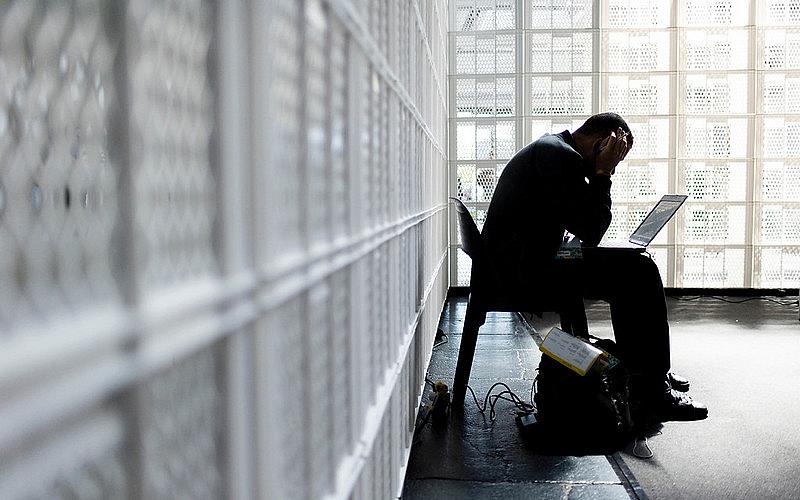How to tell great data-driven stories about health care in underserved communities
For Los Angeles Times reporter Marissa Evans, good health care stories start before the people you’re covering are in crisis. What’s preventing them from going to the clinic or doctor for needed care? What outside factors contribute to their poor health?
“So much of what the people we interview, and the communities we serve, are going through happens way before they decide to finally go to the emergency room,” she said.
Evans, who covers health and communities of color, gave a presentation Wednesday via Zoom to the 2021 California Fellows on how to tell strong data-driven stories about the social determinants of health.
Lots of data exists to examine barriers to health care in a given community or the country as a whole. And, Evans notes, you don’t have to be a technology wizard or data expert to this kind of reporting.
“I do not necessarily think anyone here has to build a database to feel like they're doing data journalism,” she said.
“Whether you know the difference between a row and a column, or you are a whiz at pivot tables, whether you are into really heavy, heavy stuff like R and Jupyter,” framing of stories is so critical to figuring out what data you want to ask for,” she added. It’s also important for figuring out “what's the best story you can tell with the data you have.”
"So much of what the people we interview, and the communities we serve, are going through happens way before they decide to finally go to the emergency room." — Marissa Evans, Los Angeles Times
She recommends looking out for “policies and systems creating inequities and barriers to health care.” She says any marginalized group is at risk for poor health due to factors out of their control. They might include people of color, people with disabilities, veterans, unhoused people, LGBTQ individuals and immigrants, to name a few.
Evans said a lot of these stories are waiting to be told and have been overlooked as reporters have been busy covering the pandemic.
“We still need to make sure that we are asking for public records. We need to make sure we're asking for data. We need to make sure these agencies, hospitals and clinics are aware we are still asking the tough questions,” she said. “They’re relying on us to not do our jobs to the fullest extent right now, and we have to keep going.”
She often thinks back to what a Minnesota public housing official told her in 2019: “We’re not used to people asking us for public records.”
She suggests that reporters make a habit out of doing data requests; think “FOIA Friday,” or any alliteration you need to remind yourself. She routinely looks at censusreporter.org for national statistics on things like health insurance status, food insecurity and transportation access. In California, she checks data portals for the state’s health and human services and environmental agencies.
“Having a steady stream of public records is very, very key to getting your data-driven story ideas done or at least getting started on them,” she said. “Because if you're not requesting items, it’s going to be very, very hard to actually get a sense of what data is out there.”
She recommends talking to the public records coordinator or a member of the agency’s data team ahead of time to get a sense of what data is available — making human connections with these people is also key — and searching an agency’s website for its record retention schedule, a data inventory of sorts.
This will help you avoid making data requests that don’t deliver the information you’re after. She also suggests asking for multiple years of data, for comparison’s sake, with five years being the “sweet spot.”
Evans frequently reads agency reports and budget requests. If an agency is asking for money for something, it might be an area reporters can delve into further, she said. She also listens in when agency heads testify at legislative committee hearings; if numbers are mentioned, there’s usually more data behind them.
She urges reporters to keep an eye out for arcane laws that even legislators themselves might not realize are on the books. When she was writing for the Star Tribune in Minneapolis, for example, she found a law in Minnesota that allowed hospitals to seize the tax refunds of patients with unpaid medical bills.
Reporters should think about the biggest health crises in their communities before COVID-19 and analyze the situation now, Evans said.
For instance, the Centers for the Disease Control and Prevention this week reported a surge in drug overdose deaths.
Or journalists might investigate how the health care system plans to handle a potential influx of patients who have delayed physicals and other screenings during the pandemic. How has the coronavirus magnified longstanding access issues?
“So many of the stories that we want to do as it relates to the social determinants of health are really stories not just of barriers to care, but also stories of survival,” Evans said. “So how are people surviving in your community?”


